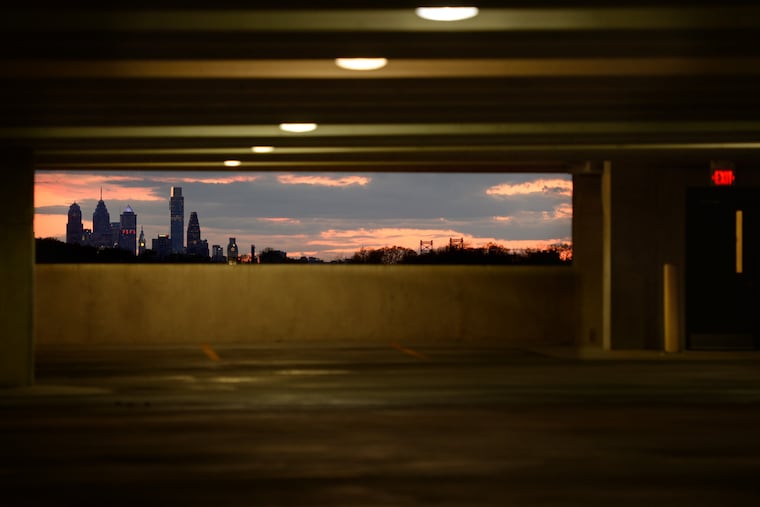Philly exiles are flooding the suburbs for jobs and schools. But at what cost to the ’burbs? | Maria Panaritis
You’ve just spilled the IPA you were drinking out of shock? Of course you haven’t. We know the suburbs are filling with Philly exiles. It's part of the Philadelphia story that won't go away.

For all the breathless proclamations by Philadelphia’s boosters over the past decade, for all the big money that money guys have been pouring into downtown apartment towers and monstrous row-house rehabs occupied by childless millennials and their now-childless boomer parents, wouldn’t you know that Philly’s Yellow Brick Road is busy with people looking for a way out of Oz.
How many Philadelphia residents are leaving this magical kingdom? Sixty thousand a year, in case you missed Pew Charitable Trusts’ impressive report last week based on U.S. Postal Service data and questionnaires. The reasons remain as basic and enduring as mustard on a Philly soft pretzel:
Better schools. Better jobs. Safer neighborhoods. A cheaper cost of living.
Half of the movers are young (18-34) — the age group you’d most want to keep if you hoped to build your city one neighborhood, one growing family at a time. About half of all who left went to the geographic blob of opportunity that so many urbanist boosters pointedly avoid mention of in the hysteria of Philadelphia’s downtown renaissance.
SUBURBIA.
What’s that, you say? You’ve just spilled the IPA you were drinking out of shock? Of course you haven’t. My guess is most people out in the 'burbs — or still living in town but considering a move to the 'burbs — greeted this report with an eye roll and a No duh.
We out here in the 'burbs know the place has been getting jampacked in recent years with formerly hip Philly-ites. Thank you, Pew, for telling the rest of the world. Maybe now Pew can examine the implications of having so many city bodies scrambling for suburban real estate.
More on that in a minute.
So, we don’t argue that Philadelphia has undergone a staggering degree of redevelopment in the past two decades. From the Ed Rendell years of the 1990s, the city’s story has transformed from “managing decline” to property values so high that one planned development even has the sales pitch of “Hey! Check-out-this-dorm-like-apartment-with-shared-bathrooms-it’s-the-hip-new-must-have!”
The physical transformation alone, particularly in and around Center City, Fishtown, South Philadelphia, and University City, has been extraordinary. It has come with a lot of banging of the marketing drum. But a different storyline inevitably takes hold over time if you spend more than a few years with a box-seat view of city life from your stoop.
Whether a newcomer or an old-time resident, depending on your goals, you begin to notice big cracks in the city’s bones: still-underfunded schools that make getting your kid into a decent elementary or high school a harrowing, reality TV-like obstacle course. Then there’s the city’s still-relatively weak job market compared to corporate powerhouses in Malvern, Radnor, Princeton, and elsewhere. And, of course, we see high violent crime particularly in poorer neighborhoods.—
These are not fabulous. So people leave.
What Pew found: If you’re a high school grad or a longtime local and you depart, it’s probably because of safety concerns. If you’re a college grad or an out-of-towner and you split town, it’s probably for a better job farther away.
If you have children who are school age: The top reason (31 percent) for leaving Philadelphia is to find better schools.
We out here, of course, already knew this.
Philadelphia expats are our neighbors. Our co-workers. Us. We talk to each other. We know every time a house is sold and is bought by someone from Philly. Often, our new neighbors are coming from Roxborough, Manayunk, South Philly, and Center City — the very neighborhoods from which Pew found the greatest out-migration.
For middle-class and working-class families without deep pockets for private prep school and where both parents are working to pay the bills, suburban public schools are a huge load off your back. Even in districts that increasingly rely on citizen donations for enrichment activities, there is a comfort in knowing your child is taken care of, and that it won’t cost you $25,000 a head in tuition — just a single, if sizable, tax bill.
One thing that could really use some of Pew’s analytical muscle is less obvious but simmering. It’s happening in those same suburbs.
Some of the most well-known suburban school districts are bursting at the seams with enrollment, even as the U.S. birth rate has dropped to historic lows. State funding has not kept pace with the explosive population growth and soaring local tax bills aren’t entirely adequate, either.
This is one reason why there was outrage last year over whether Abington should accept a $25 million gift from billionaire alum Stephen Schwarzman.
During an impassioned school board meeting that I attended, officials in the Montgomery County school district displayed charts depicting incredibly high spikes in enrollment and a district ill-equipped to serve the influx. Lower Merion and Haverford Township also are grappling with more children than they are currently built to serve, and a determined researcher would surely find many more.
What’s the story here? Why is this happening? How can it be addressed so that these schools to which so many Philadelphians turn for financial relief don’t buckle under the weight of exorbitant taxes and inadequate state funding?
This, I might kindly suggest, could make for a great Pew study. One whose findings might really knock a few pints of beers out of our hands.